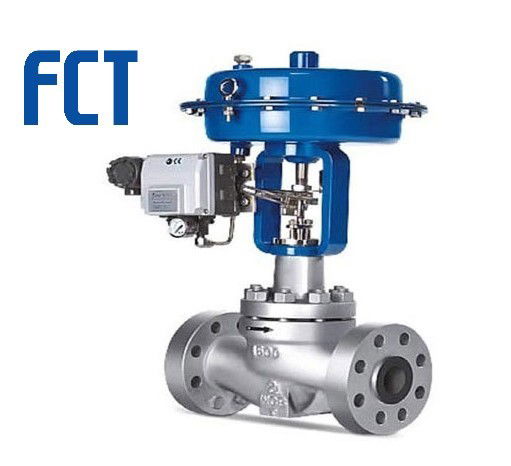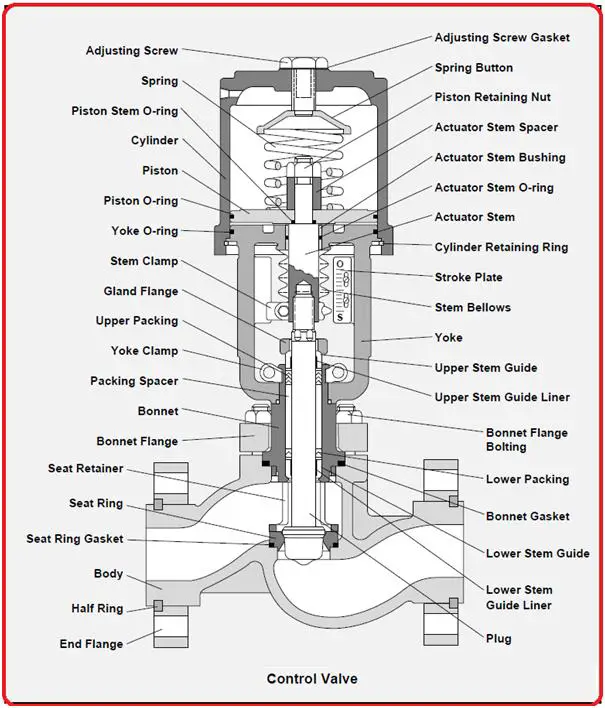The Role of Control Valves in Fluid Flow Management Systems
The Role of Control Valves in Fluid Flow Management Systems
Blog Article

Maximize Power Cost Savings and Comfort With Advanced Structure Automation Controls
In the realm of modern style and center management, the combination of advanced building automation regulates stands as a pivotal development. By taking advantage of the power of automation, structures can adjust, respond, and develop in methods that were once unimaginable.
Power Efficiency Benefits
Energy efficiency advantages can dramatically reduce power consumption and functional costs in buildings. Energy-efficient systems, such as innovative structure automation controls, can maximize the usage of resources like home heating, cooling, and illumination, leading to reduced power expenditures over time.
In addition, improved power performance can prolong the lifespan of building tools and systems. By operating a lot more efficiently, heating and cooling systems, lighting components, and other building elements experience less damage, resulting in lowered maintenance and replacement costs. In addition, energy-efficient buildings typically command greater residential property values and rental prices, offering long-lasting financial advantages to owners.
Moreover, energy performance can improve resident convenience and productivity. Effectively controlled indoor settings with optimum lights and thermal conditions create an even more helpful and positive work space, resulting in enhanced worker fulfillment and performance. On the whole, the power efficiency advantages connected with innovative structure automation controls are multifaceted, including cost savings, environmental stewardship, and occupant health.
Enhanced Comfort Control
Enhancing convenience control in structure settings needs an innovative combination of sophisticated automation systems for ideal owner wellness. By utilizing innovative building automation controls, facilities can customize the interior setting to meet the details needs and preferences of occupants. control valves.
By integrating these sophisticated controls, buildings can not just enhance comfort but also enhance power effectiveness by enhancing system operations based on real occupancy and use patterns. Eventually, focusing on resident convenience via innovative automation systems leads to a much more enjoyable and much healthier indoor atmosphere.
Operational Performance Improvements

Moreover, the execution of real-time monitoring and analytics devices allows building operators to recognize energy inadequacies and functional anomalies immediately. By constantly checking energy use patterns and system performance metrics, modifications can be made in real-time to enhance energy consumption and ensure peak functional efficiency. control valves. In addition, including need feedback approaches into structure automation controls can additionally boost functional performance by dynamically changing energy usage based official website upon grid problems and rates signals
Indoor Climate Optimization
Efficient indoor climate optimization is an essential facet of structure automation controls, ensuring occupants' convenience and wellness while optimizing power savings. By utilizing advanced sensing units and controls, building automation systems can continually adjust and check temperature, humidity levels, air high quality, and ventilation to produce an ideal interior setting. Keeping comfortable and constant conditions not just improves passenger satisfaction however also improves efficiency and overall wellness.
Interior climate optimization likewise plays an essential function in energy performance. By fine-tuning home heating, ventilation, and air conditioning systems based on real-time data and occupancy patterns, constructing automation controls can dramatically reduce energy consumption - control valves. For example, carrying out techniques such as demand-controlled ventilation and thermal zoning can assist minimize power waste while making certain that each area of the building obtains the essential conditioning.

Sustainable Setting Development
Structure automation manages not only enhance interior environment conditions for power efficiency and owner convenience but likewise lay the foundation for producing a lasting atmosphere with strategic administration of systems and sources. By incorporating sophisticated structure automation modern technologies, such as sensing units, actuators, and intelligent software application, centers can check and change power use read this post here in real-time to reduce waste and lower their carbon impact. These systems make it possible for anticipating maintenance, determining potential problems before they rise and enhancing tools performance to improve long life and performance.
Additionally, lasting setting creation expands beyond power management to include water conservation, waste decrease, and interior air high quality enhancement. Structure automation controls can manage water usage, discover leaks, and guarantee appropriate garbage disposal techniques, adding to general sustainability efforts. In addition, by monitoring and managing air flow and purification systems, these modern technologies enhance resident health and performance while decreasing energy consumption connected with HVAC operations.
Final Thought
To conclude, advanced building automation manages deal considerable advantages in regards to power savings, comfort control, operational effectiveness, indoor environment optimization, and producing a sustainable atmosphere. By applying these controls, buildings can accomplish optimum performance while minimizing power intake and improving resident convenience. It is apparent that making use of sophisticated automation technology is vital in improving building performance and developing an extra sustainable future.
Energy effectiveness benefits can dramatically reduce power consumption and operational prices in structures. Overall, the energy performance benefits connected with advanced building automation controls are multifaceted, encompassing price financial savings, ecological stewardship, and resident health.
In addition, integrating need response strategies visit homepage right into structure automation controls can even more boost functional performance by dynamically changing power usage based on grid conditions and prices signals.
Structure automation manages not only maximize indoor environment problems for power performance and passenger comfort but additionally lay the foundation for creating a lasting setting with critical monitoring of sources and systems.In final thought, advanced building automation controls deal significant benefits in terms of energy financial savings, convenience control, operational efficiency, indoor climate optimization, and developing a sustainable environment.
Report this page